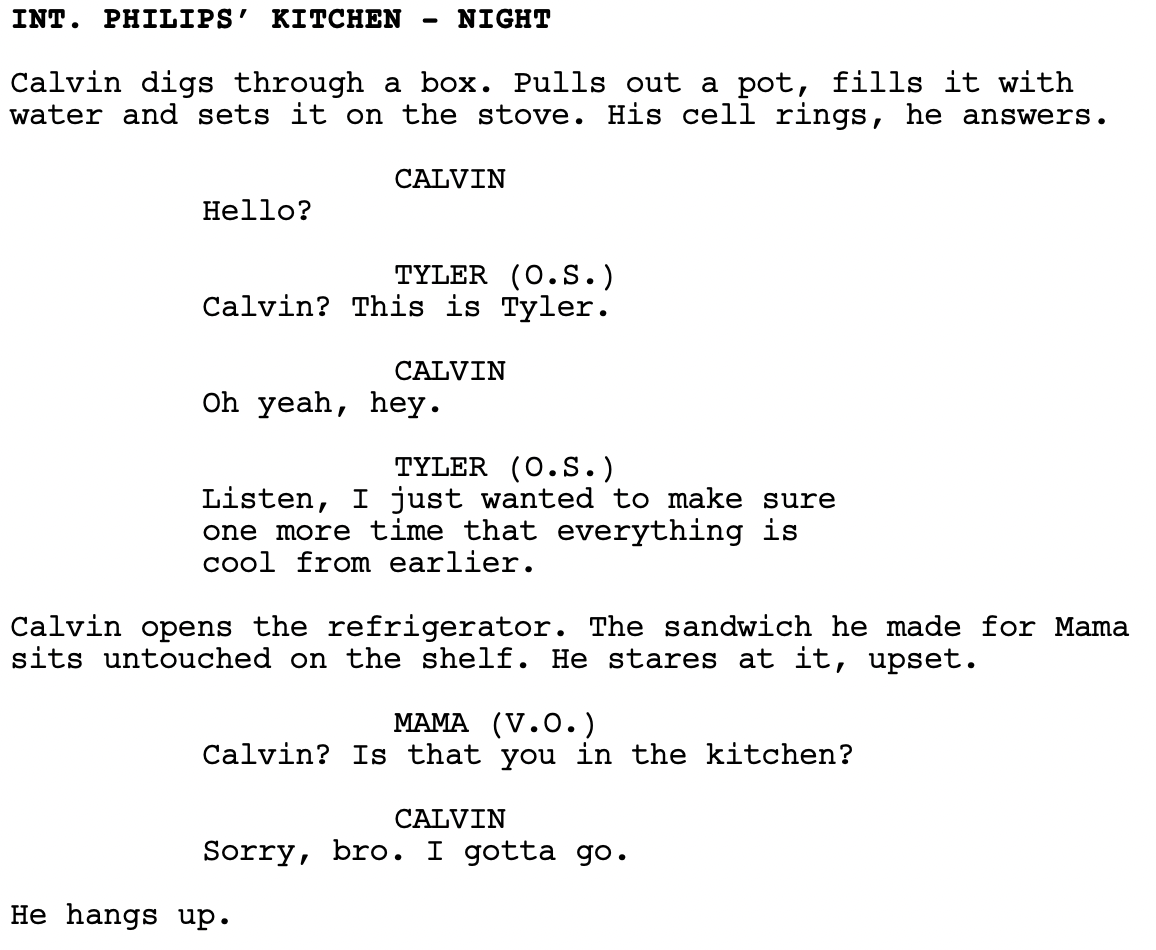Fix This - 10.20.24
Screenplays follow a very specific format. There are standards for page count, slug lines, parentheses, underlining... just to name a few.
These rules seem easy to follow, but we see simple errors all the time in the scripts we give notes on. One of the quickest ways for a reader to know you're a beginning screenwriter is to mess up basic conventions.
Take a look at the scene below. Can you spot the common mistake?
Oops! This writer switched O.S. and V.O.! We see it alllllllll the time.
The two might seem interchangeable, but there's a small but critical difference.
V.O. stands for “voice over.” You’ll see it used a lot in dialogue when a narrator speaks, but it’s also used for telephone conversations where you can hear the person on the other end but not see them. Radio and television broadcasts also use V.O. because the speaker is not in the same space as the scene.
O.S. stands for “off screen". Off screen means the person is in the room or general vicinity, but we can't see them. Here, Calvin’s mother is talking to him from the other room. She’s physically present in the house, but not in the shot.
The correct way to format this scene looks like this…
That’s better! But there’s one more formatting mistake. Did you spot it?
In a screenplay, sound effects should be in all caps. When Calvin’s phone rings, it should look this this…
Want more help with your writing projects? Send us your feature screenplay or short film script for professional feedback. We’ll mark formatting mistakes on your pages and give in-depth story notes to help you elevate you script.



